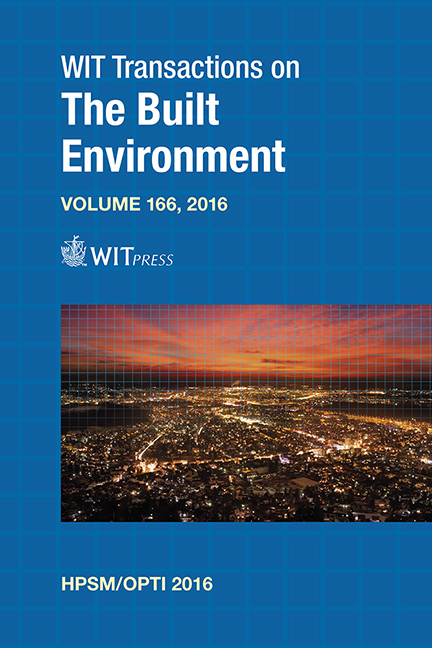Residual Flexural Property Of Water Absorbed CFRP During Thermal Cycling
Price
Free (open access)
Transaction
Volume
166
Pages
10
Page Range
277 - 286
Published
2017
Size
1,172 kb
Paper DOI
10.2495/HPSM160251
Copyright
WIT Press
Author(s)
H. Katogi, K. Takemura, N. Iijima
Abstract
This study investigated the effect of water absorption on the residual flexural property of CFRP during thermal cycling. Water absorption tests of CFRP and epoxy resin were conducted for 3 hours and 100 hours at 90°C. Thermal cycling tests of water absorbed CFRP and epoxy resin were also conducted. The temperature of the thermal cycling test ranged from -196ºC to room temperature, and the maximum number of cycles was 103 cycles. A static three-point flexural test of water absorbed CFRP was conducted after the thermal cycling test. A damage observation of CFRP during thermal cycling was performed. A single-edge notched bending test of water absorbed epoxy resin was also conducted. As a result, the following conclusions were obtained. In the case where the water absorption rate was 0.3% (3 hours), the flexural strength and modulus of CFRP decreased with an increase in the number of cycles. In the case where the water absorption rate was 1.1% (100 hours), there was almost no change in the flexural strength and modulus of CFRP. From the damage observation, crack initiations in the cross section of 0.3% and 1.1% water absorbed CFRP were found during thermal cycling. The number of cracks in the cross section of 0.3% and 1.1% water absorbed CFRP increased with an increase in the number of cycles. The Mode I fracture toughness of 2.6% (100 hours) water absorbed epoxy resin increased compared with that of 0.7% (3 hours) water absorbed epoxy resin during thermal cycling. Therefore, the flexural property of CFRP was affected by the Mode I fracture toughness of water absorbed epoxy resin.
Keywords
CFRP, residual flexural property, thermal cycling, crack, water absorption, mode I fracture toughness





